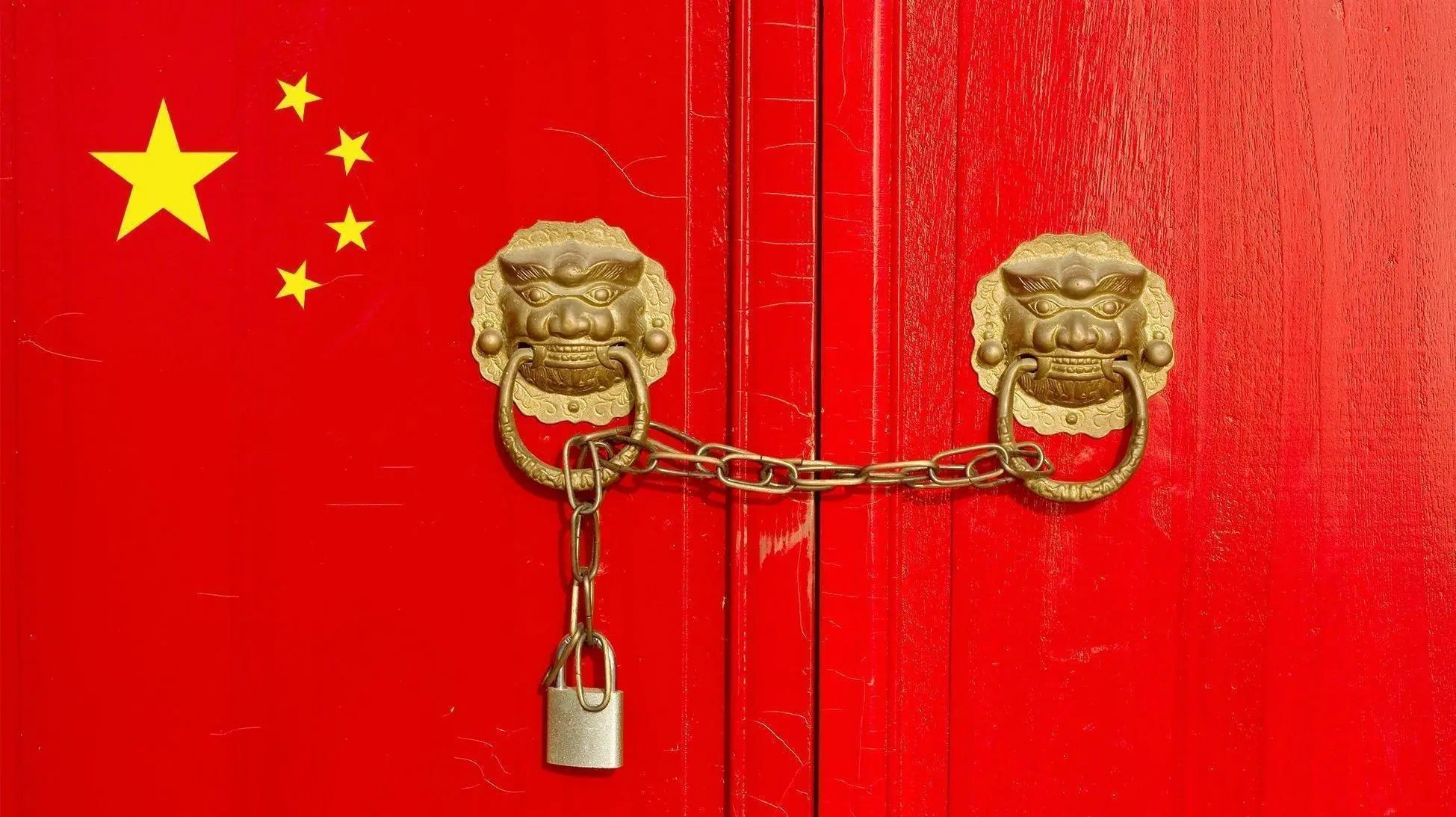Comments (4)
Karl Townsend
China is worried that the economy will weaken further
Ryan Unwin
January 2019 will begin the parabolic phase.
Luke Dawson
I hope you are right which means an extended accumulation phase.
Anthony Scott
This is great news.

China is hardly what one would describe of as the epitome of transparency, especially when it comes to issues of economic data and reporting. But a recent move by the People’s Bank of China (PBoC), the Chinese central bank should be cause for concern in the world’s second largest economy. As global markets fell last week on the back of trade war worries as well as a slowdown in Chinese growth, China’s central bank announced that it would inject US$117 billion into the banking system, allowing commercial banks to cut the share of deposits that they must hold in reserve, in an effort to boost lending and halt what some analysts believe may be a far sharper slowdown in economic growth than reported.
Since last summer, Beijing has adopted a series of fiscal and monetary stimulus measures in an effort to stave off slowing growth. In China, delivering on economic growth is part of the social compact made between the Chinese Communist Party and the people, limited personal freedoms, in exchange for broad economic freedoms and the enjoyment of economic comfort. With growth slowing, that compact is about to be tested for the first time since former Chinese President Deng Xiao Ping instituted economic reform in the 1980s. A factory survey last week showed that China’s manufacturing sector — one of the key providers of jobs in the Middle Kingdom — is slowing. Just the latest in a string of data indicating that growth continues to slow. Even though it is more than three weeks from the Lunar New Year, factories have already started to send workers home since as early as last November to celebrate the festivities, although there’ll not be much celebration as the economic prospects for workers grows ever more uncertain.
The PBoC announced last Friday, via its website that it would cut the required reserve ration by 1% and would partially offset the cut by not renewing loans to commercial banks through the PBoC’s Medium-term Lending Facility that is scheduled to mature at the end of the first quarter of 2019. The impact of the move would be a cash injection of 800 billion yuan or US$117 billion into the banking system, to increase liquidity, but it’s not a given that the move will trickle down to small and medium Chinese businesses, those most hit by the recent slowdown. On Friday, Chinese Premier Li Keqiang met officials of China’s three largest commercial banks and urged them to boost lending to small, privately held businesses, but they are not compelled to do so.

And at last December’s annual central economic work conference, Chinese policymakers signaled their intention to enact further tax cuts, infrastructure spending and monetary easing. Following the 2008 financial crisis, China ramped up debt spending aggressively, pouring 4 trillion yuan (US$585 billion) into a beleaguered economy, but the decade of debt binging has left limited room for Chinese policymakers to stimulate the economy without sparking financial risk — an issue which Beijing recognizes as the PBoC continues to resist slashing benchmark lending and deposit rates — which would mark an escalation of monetary easing. With the Fed continuing to put upwards pressure on rates, any move by the PBoC to cut rates further would risk igniting capital outflow and put renewed pressure on the Chinese yuan.
Already, the moves have sparked renewed interest Bitcoin by both Chinese investors, citizens and businesspeople, sending the bellwether cryptocurrency back above the US$4,000 level, it’s highest level in 2019. Bitcoin has long been known to facilitate capital flight from China. The opacity of Bitcoin has long facilitated Chinese citizens attempting to circumvent their country’s capital controls which restrict outflows to a paltry US$50,000 a year. As recently as 2017, there were even “kimchi premiums” caused by Chinese traders bringing cash across to nearby South Korea to purchase Bitcoin, with the price of Bitcoin in South Korea reaching a premium of as high as 20% compared with the rest of the world.
And with growing signs that the PBoC will eventually have to commence another round of monetary easing, which would put continued downward pressure on the Chinese yuan, Chinese citizens may be looking to get out early, while the going is still good.

At a cabinet meeting last July, Chinese policymakers marked a decisive break with austerity, calling for new stimulus measures on the back of “uncertainties in the external environment,” a euphemism for rising trade tensions with the United States. And Beijing has responded beyond just pumping liquidity into the banking system — it has also jumpstarted big infrastructure projects, which although vast are not on the same scale as post-2008. That China’s stimulus response is somewhat mild is worrying. China is somewhat hamstrung in its monetary policy options. Compared to 2008, when debt levels were far lower and investment in housing and infrastructure had more room to run, China today has to contend with a shadow-banking industry, the size of which is hard to estimate, but which some analysts claim to be as large as three times the entire Chinese economy as well as the countless white elephant projects across the country — from entire ghost cities to highways to nowhere — China can only keep building for so long.
To exacerbate China’s problems, according to Moody’s Analytics, the amount of new capital investment required to generate a given unit of GDP growth has more than doubled since 2007. Meaning that the Chinese government will need to spend twice as much just to maintain the status quo — an option which is increasingly more difficult to execute on. And China’s tepid stimulus has done little for its already embattled stock markets. The CSI 300, an index which tracks China’s blue-chip stocks fell by 25% in 2018, with the bulk of that fall (15%) occurring after the July cabinet meeting — suggesting that investors are not convinced that China’s policymakers will be able to spend their way out of this current slowdown. 
Nothing like a good wall to keep the Bitcoin out. Wait, what?
With limited options, Beijing has been pulling out all the stops to try and spur growth. At the annual central economic work conference last December, which sets the agenda for the coming year, Chinese policymakers pledged further tax cuts and signaled that it would indeed consider monetary loosening — putting downward pressure on the yuan. And while global stocks rebounded on Friday, amidst the pause in the U.S. — China trade war and the PBoC’s move to inject liquidity into the banking system, the effect of any tax cut in China would be momentary at best. Already Chinese households have been reducing consumption of luxury goods as well as putting off the purchase of bigger ticket items such as houses and cars. Having gone through the ravages of Mao’s doomed economic policies, Chinese households have a propensity for frugality even in the best of times, to guard against the vagaries of life. Generations of Chinese, even the newly rich, have experienced grinding poverty and deprivation at some point in their lives.
With the yuan likely to come under increasing pressure in the medium term, Chinese exports may become cheaper, but if the Trump administration continues to put tariffs on a variety of Chinese goods, the cheaper yuan will have limited impact. And as labor costs have been rising in China, much of the lower end of China’s manufacturing base has since moved to other countries where labor costs are far lower such as Cambodia, Vietnam and Bangladesh.
In the medium term at least, downward pressure on the yuan, the potential for China to institute capital controls to reign in capital flight may provide an unexpected boost for cryptocurrencies, in particular Bitcoin — long favored by the Chinese as a vehicle for moving wealth out of the Middle Kingdom. And although China may have banned cryptocurrency exchanges, enterprising Chinese have long used a variety of methods to circumvent Beijing’s restrictions. China’s measures to shore up its economy may instead provide an unexpected boost for Bitcoin.
China is worried that the economy will weaken further
January 2019 will begin the parabolic phase.
I hope you are right which means an extended accumulation phase.
This is great news.
Patrick is an innovative entrepreneur and a lawyer passionate about cryptocurrencies and the business world. He is the CEO of Novum Global Technologies, a cryptocurrency quantitative trading firm. He understands the business concerns of founders and business people helping them to utilise the legal framework to structure their companies to take advantage of emerging technologies such as the blockchain in order to reach greater heights. His passion for travel, marketing and brand building has led him across careers and continents. He read law at the National University of Singapore and graduated with Honors in the Upper Division and joined one of Singapore’s top law firms, Allen & Gledhill where he was called to the Singapore Bar as an Advocate & Solicitor in 2005. He created Purer Skin, a skincare and inner beauty company which melds the traditional wisdom of ancient Asian ingredients such as Bird's Nest with modern technology. In 2010, his partner and himself successfully raised $589,000 from the National Research Foundation of Singapore under the Prime Minister’s Office. He has played a key role in the growth of Purer Skin from 11 retail points in Singapore to over 755 retail points in Singapore and 2 overseas in less than a year. He taught himself graphic design, coding, website design and video editing to create the Purer Skin brand and finished his training at a leading Digital Media Company.
Leave your comments
Post comment as a guest